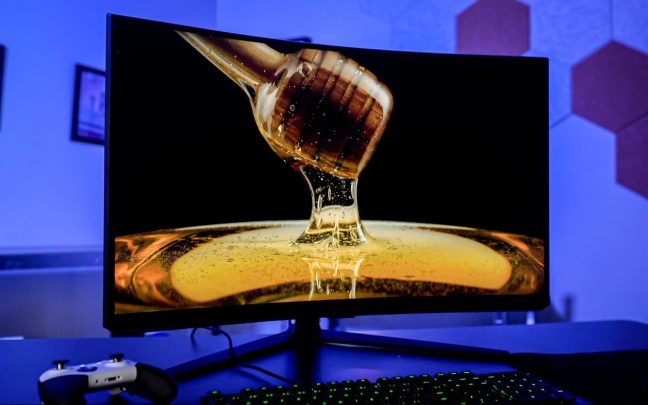Display Stream Compression (DSC) is a compression algorithm that lets monitors and TVs display resolutions and refresh rates that they wouldn’t be otherwise capable of handling. It improves the capabilities of HDMI and DisplayPort cables, letting them too, serve displays that are higher resolution and refresh rate than they are natively capable of doing. DSC does all this without almost anyone knowing. You’ve probably had it enabled without realizing it.
That’s because DSC is a visually lossless compression format. While not mathematically lossless, you’d be very hard-pressed to see any kind of difference with DSC enabled. That’s a good thing because it means that your 4K 240Hz monitor can handle all that data it needs without compromising on quality.

What is DSC?
DSC is a VESA-developed compression algorithm that’s supported by most modern TVs and monitors. It was first introduced in March 2014, but it wasn’t until version 1.2 was released in 2016 that it was officially included in the DisplayPort 1.4 specification. Version 1.2 was also added to the HDMI 2.1 specification in 2017, making DSC much more widely available. It’s since been adopted by DisplayPort 2.0/2.1.
The purpose of DSC was to reduce the amount of information being transmitted from a source device, like a gaming PC or UHD Blu-ray player, to a TV or monitor. In practice, this means DisplayPort 1.4 can support 4K 240Hz displays, despite the fact that the cable doesn’t actually have the raw bandwidth to support such a resolution and refresh rate combination.
You can see this with the excellent Samsung Neo G8, which comes with DisplayPort 1.4 and HDMI 2.1 inputs, and yet it can receive a full 4K 240Hz signal from either port option.
DSC can also be used by USB-C, USB4, and Thunderbolt 3/4 connectors to transmit higher-quality video than their bandwidth would allow.

How does DSC work?
DSC is a mathematically lossy, but visually lossless compression algorithm. That means that although there are some differences in the eventual image that is produced after the compression is applied, the human eye can’t really register it. It uses a range of encoding tools to achieve this but ultimately can deliver a 3:1 reduction in the size of the data being transmitted. It manages this with just a 0.5-microsecond increase in overall latency, making it the kind of technique that you can use during gaming without it having any kind of impact on the look or feel of your play.
This makes it possible for HDMI 2.1 to handle up to 10K at 120Hz (when also using chroma subsampling), or DisplayPort 2.1 to manage up to a single 16K display at 60Hz with 10-bit color and HDR.
It’s important to remember, however, that DSC only affects the data that’s transmitted from the device to the display. It doesn’t help your graphics card in the same way that FSR or DLSS does, so you’ll still need a GPU that can render your games at whatever resolution and frame rate you’re targeting, regardless of whether you use DSC or not.
Should I use DSC?
Yes, absolutely. There’s no chance you’ll notice any difference with it enabled, and if your monitor and graphics card support it, then you’re likely already using it and didn’t realize it. Most of the cutting-edge 4K high refresh rate monitors utilize DSC in some capacity, and its use is what enables the latest Nvidia graphics cards to still sport DisplayPort 1.4 connectors, rather than the DisplayPort 2.1 found on AMD’s RX 7000 series.



